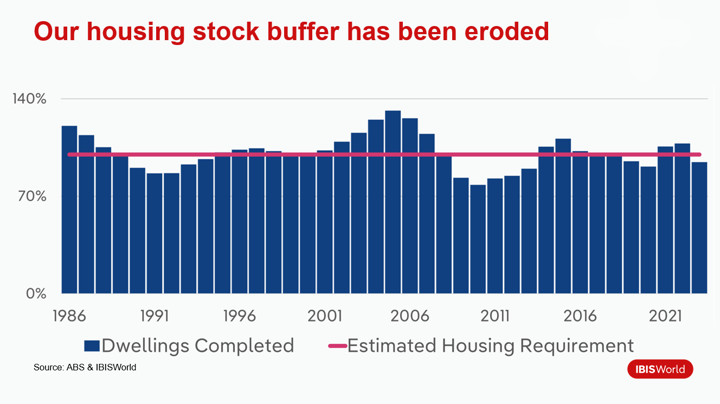Australia is facing not one, but three major structural challenges that demand strategic foresight: housing undersupply, workforce shortages and limited economic diversity.
In a presentation delivered at our recent client event in Melbourne, Senior Industry Analyst Andrew Ledovskikh examined how each challenge reflects broader systemic pressures, and why consistent policy direction is needed to support national resilience.
Watch the presentation below for a data-driven look at what’s shaping Australia’s future and how strategic planning can help mitigate growing economic constraints:
What does the presentation cover?
Andrew offers a detailed breakdown of:
- Why housing affordability can’t be solved without confronting Australia’s reliance on private supply.
- What’s driving labour market pressures across key industries, and why participation may have peaked.
- How Australia’s low economic complexity ranking impacts national resilience over time.
- Why policy inconsistency and short-termism are compounding these issues.

Key data points
The session highlights figures and statistics that illustrate the scale of challenges across Australia’s housing market, labour force and economic base:
- Australia has a housing shortfall of 280,000 dwellings, with nearly 190,000 tied to the decline in social and community housing stock.
- Only 1.1% of rental properties in Australia are vacant, compared to 7.1% in the US, 2.4% in Canada and 1.6% in New Zealand.
- Government-built housing has fallen from 23% of total supply to just 1-3%, leaving the private market to shoulder almost all new development.
- Australia’s economy ranks 99th globally for economic complexity, below Algeria and Botswana.
- Every sector is going to face labour shortages in the next five years.

Why are we talking about this?
Each of these issues – housing, labour and economic diversity – has been discussed in isolation for decades. But Andrew argues they all stem from the same underlying challenge: an over-reliance on market forces and a lack of cohesive, long-term national planning.
The presentation highlights how decisions made today will shape our economic position in the decades to come. From migration targets to investment strategies, understanding the broader context behind these structural shifts is essential for informed decision-making.
Who should watch?
This session is suited to professionals in lending, investment, consulting and business strategy who are working with future forecasts, sector outlooks or capital planning.
If your work involves assessing risk, identifying growth opportunities or supporting clients through economic uncertainty, this presentation provides timely and practical context.
Ready to go deeper? Watch the full presentation to better understand the structural forces shaping Australia’s economy.









